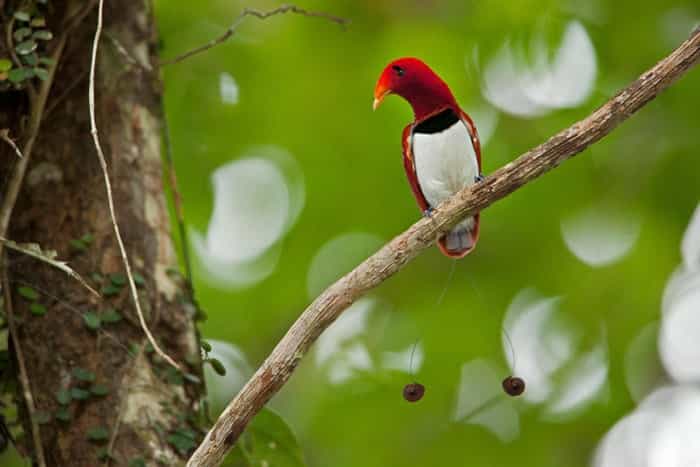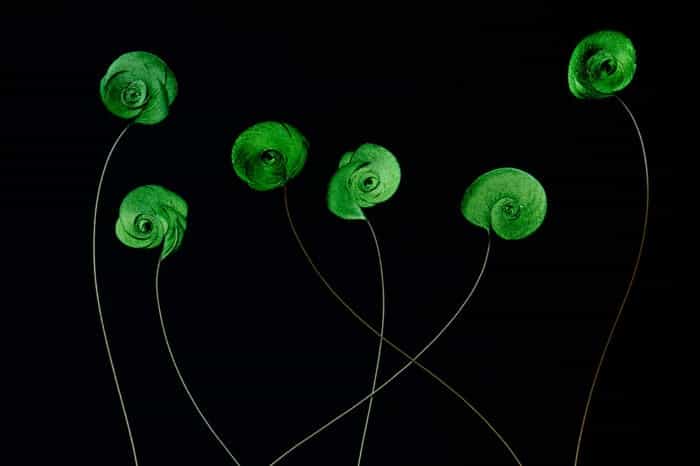The world’s tiniest bird-of-paradise looks like a sad bean

Bec Crew
Bec Crew

Ugh, someone give him a hug, I can’t take it anymore. He looks so glum and needy.
Weighing in at just 50 grams, the king bird-of-paradise (Cicinnurus regius) is a diminutive little fellow, but don’t tell him that, he’s clearly got enough to worry about. This precious little peanut might be small in stature, but that just means he has to works extra hard to get noticed.
His courtship displays are extravagant and weird, his colours are some of the most vibrant of all the birds-of-paradise, and his tail feathers look like psychaedelic lollypops – but more on that later.
Hailing from the lowland forests of New Guinea and the nearby islands, the king bird-of-paradise belongs to the Paradisaeidae family, of which there are 42 known species. Birds-of-paradise range from Indonesia to Australia, but most are found in New Guinea.
In Australia, we have the Victoria’s riflebird (Ptiloris victoria), endemic to the Atherton Tableland region of north-eastern Queensland, its iridescent purple plumage is so dark, it looks black.
The king bird-of-paradise, on the other hand, has bright red plumage and unexpectedly blue legs and feet. Those ‘mini wings’ you can see splayed out with the green trimming are called pectoral fans, and they’re a key element of the species’ mating ritual.
As you can see here, the pectoral fans extend from just below the bird’s neck. When they’re folded away, they completely disappear:

(Image credit: National Geographic Image Collection/Alamy Stock Photo)
Another unique feature of the king bird-of-paradise is its tail feathers, which are as bizarre as they are beautiful. These sparse, wire-like twin feathers are tipped in iridescent green or brown spiral discs, which the bird raises above its head while courting a female:

(Image credit: Frans Lanting Studio/Alamy Stock Photo)
The species’ slightly dopey appearance is due to the specialised feathers on its head, which extend down over much of its beak and give it an uncanny half-moon shape. Its name, Cicinnurus, refers to the Greek word for “curled lock of hair”.
Of course, it should go without saying at this point, but the females look like this.
The good news is these birds, while tiny, delicate, and beautiful, are not currently under threat, and are locally fairly common. Let’s hope things stay that way.
Here’s this little man trying his best:

